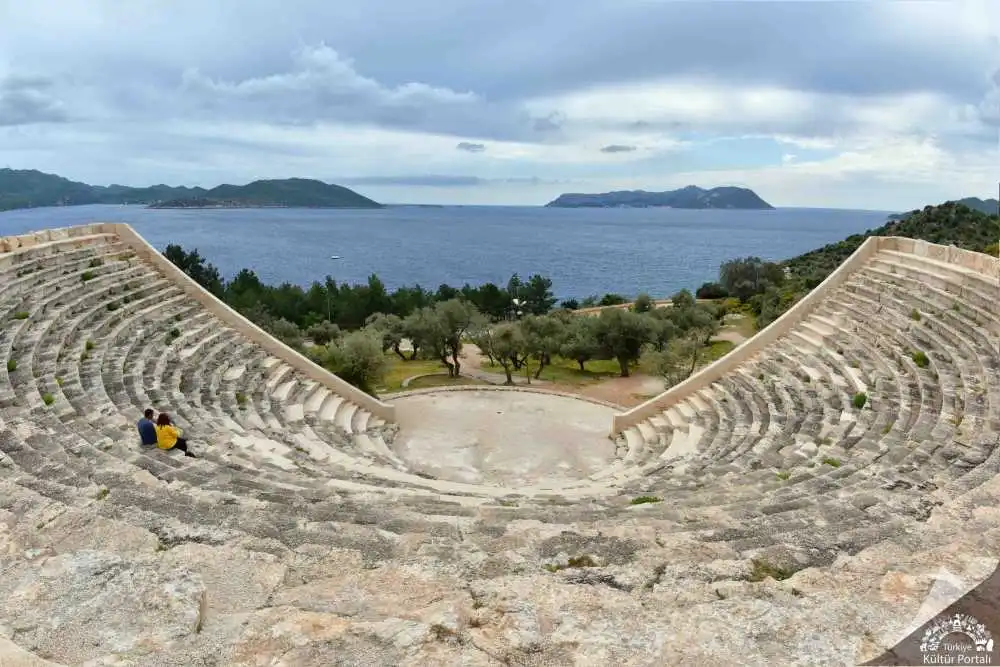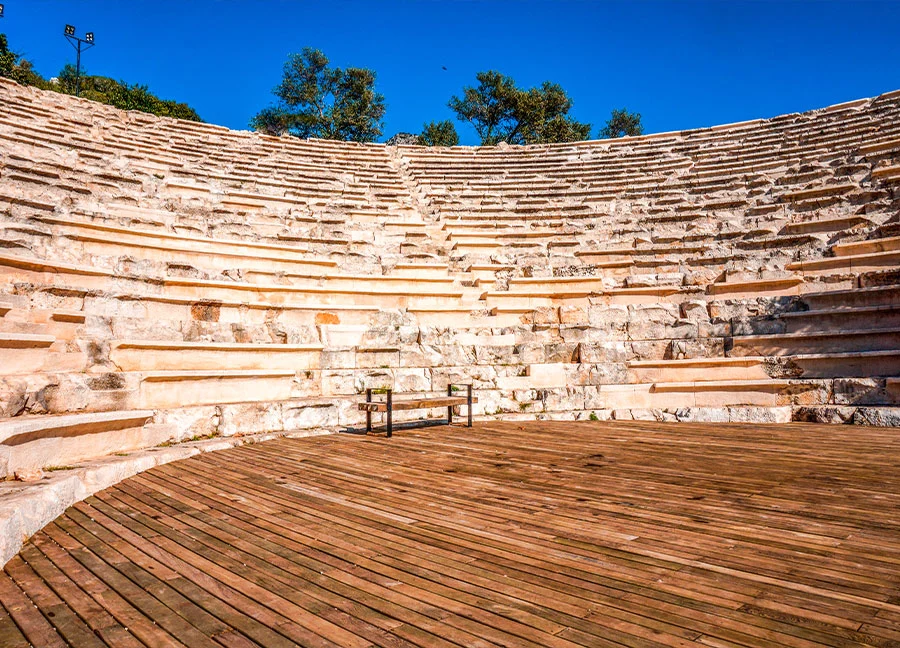Antiphellos Ancient City
Description
Antiphellos, known as Habesos or Habesha in the Lycian language, is one of the ancient settlements of the Lycian region. The city, which later took the name Antiphellos, means "the place opposite the rocky place", "opposite Phellos". It was one of the member cities of the Lycian Union and is known to have been the port of the city of Phellos to the north and to have existed since the 6th century BC. In the Hellenistic period, commercial ventures became more important and Antiphellos developed more rapidly in response to the decline of the main city, Phellos, and became an important port during the Roman Empire.
From the middle of the 2nd century BC, Antiphellos was recognised as a commercial city, although it was restricted to a single vote in the Lycian Union, both with its own coins and those issued on behalf of the Union. The ruins of the ancient city within the district of Kas continue around the district and along the peninsula in an east-west direction. At the beginning of the peninsula and on the side facing the island of Meis, the remains of the Hellenistic city wall can be seen. To the south-east of the church, now a mosque, where the walls face the harbor, there are the remains of a temple with an unknown temenos to which god it belongs. The temenos of the temple was built in rectangular masonry. The original structure dates from the 1st century BC and the later addition from the 3rd century AD.
Compared to the temple, the theatre is the best preserved building in Antiphellos. Located on the southern slope of the acropolis hill, the theatre faces the sea and has twenty-six rows of seats (cavea). The rows are divided into three sections by four vertical staircases; there is no diazoma. The theatre, which is thought to date from the Hellenistic period, does not have a fixed stone screen. To the north-east of the theatre is a burial chamber with twenty-four female reliefs carved into the rock. The shape of the women and the decoration of the façade date it to the 4th century BC. In the bazaar there is a Gothic gabled tomb with a well-preserved hyposorion and a Lycian inscription from the 4th century BC, which has become a symbol of Kas. On the hill that borders modern Kas from the north-east, there are many rock tombs with Gothic or Lycian inscriptions. The most interesting of these is a Gothic vaulted tomb with a Lycian inscription on the second floor. Centuries later, when the tomb was reused by a woman called Claudia Recepta, a Latin inscription was added. Apart from these, Lycian sarcophagi built in the water around the harbour and near the shore in later periods are the other monuments of the city that have survived to the present day.
Short Description
Antiphellos, known as Habesos or Habesha in the Lycian language, is one of the ancient settlements of the Lycian region. The city, which later took the name Antiphellos, means "the place opposite the rocky place", "opposite Phellos". It was one of the member cities of the Lycian Union and is known to have been the port of the city of Phellos to the north and to have existed since the 6th century BC. In the Hellenistic period, commercial ventures became more important and Antiphellos developed more rapidly in response to the decline of the main city, Phellos, and became an important port during the Roman Empire.
From the middle of the 2nd century BC, Antiphellos was recognised as a commercial city, although it was restricted to a single vote in the Lycian Union, both with its own coins and those issued on behalf of the Union. The ruins of the ancient city within the district of Kas continue around the district and along the peninsula in an east-west direction. At the beginning of the peninsula and on the side facing the island of Meis, the remains of the Hellenistic city wall can be seen. To the south-east of the church, now a mosque, where the walls face the harbor, there are the remains of a temple with an unknown temenos to which god it belongs. The temenos of the temple was built in rectangular masonry. The original structure dates from the 1st century BC and the later addition from the 3rd century AD.






